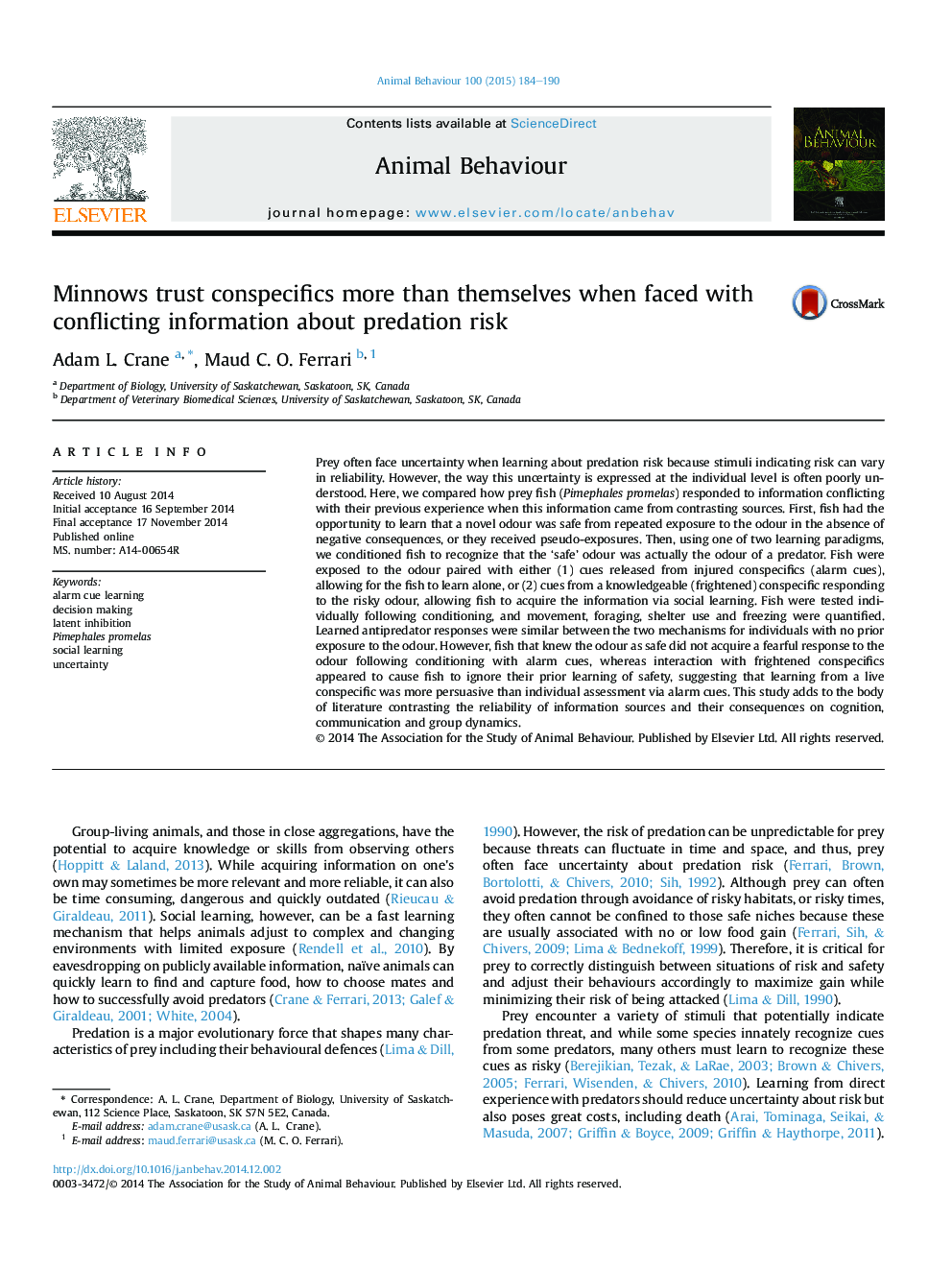| کد مقاله | کد نشریه | سال انتشار | مقاله انگلیسی | نسخه تمام متن |
|---|---|---|---|---|
| 8490239 | 1645492 | 2015 | 7 صفحه PDF | دانلود رایگان |
عنوان انگلیسی مقاله ISI
Minnows trust conspecifics more than themselves when faced with conflicting information about predation risk
ترجمه فارسی عنوان
هنگامی که با اطلاعات متناقض در مورد خطر شکنجه مواجه می شوید، منافع خود را بیشتر از خود می گیرید
دانلود مقاله + سفارش ترجمه
دانلود مقاله ISI انگلیسی
رایگان برای ایرانیان
کلمات کلیدی
موضوعات مرتبط
علوم زیستی و بیوفناوری
علوم کشاورزی و بیولوژیک
علوم دامی و جانورشناسی
چکیده انگلیسی
Prey often face uncertainty when learning about predation risk because stimuli indicating risk can vary in reliability. However, the way this uncertainty is expressed at the individual level is often poorly understood. Here, we compared how prey fish (Pimephales promelas) responded to information conflicting with their previous experience when this information came from contrasting sources. First, fish had the opportunity to learn that a novel odour was safe from repeated exposure to the odour in the absence of negative consequences, or they received pseudo-exposures. Then, using one of two learning paradigms, we conditioned fish to recognize that the 'safe' odour was actually the odour of a predator. Fish were exposed to the odour paired with either (1) cues released from injured conspecifics (alarm cues), allowing for the fish to learn alone, or (2) cues from a knowledgeable (frightened) conspecific responding to the risky odour, allowing fish to acquire the information via social learning. Fish were tested individually following conditioning, and movement, foraging, shelter use and freezing were quantified. Learned antipredator responses were similar between the two mechanisms for individuals with no prior exposure to the odour. However, fish that knew the odour as safe did not acquire a fearful response to the odour following conditioning with alarm cues, whereas interaction with frightened conspecifics appeared to cause fish to ignore their prior learning of safety, suggesting that learning from a live conspecific was more persuasive than individual assessment via alarm cues. This study adds to the body of literature contrasting the reliability of information sources and their consequences on cognition, communication and group dynamics.
ناشر
Database: Elsevier - ScienceDirect (ساینس دایرکت)
Journal: Animal Behaviour - Volume 100, February 2015, Pages 184-190
Journal: Animal Behaviour - Volume 100, February 2015, Pages 184-190
نویسندگان
Adam L. Crane, Maud C.O. Ferrari,
